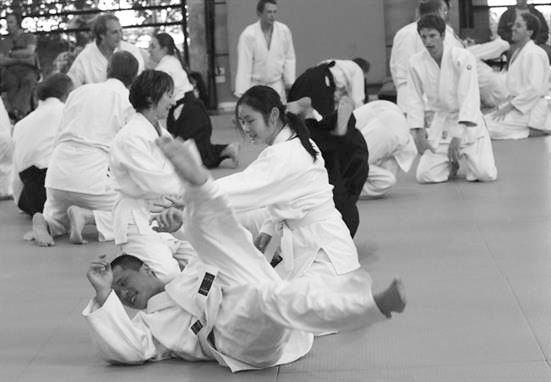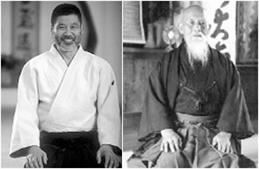aaaa
|
Want to start training in Aikido? Here's a quick rundown of what to do Do you run beginners courses? What's involved in training in Aikido?
Aikido techniques include a range of joint locks, which can be painful when applied. The training can be very vigorous and intensive yet at other times, slow and relaxing. Do women train in Aikido? What clothes do I need to wear? Do I need to buy a uniform to start? You'll find that Aikido is very hard on normal clothes, which is why we wear a special martial arts uniform (dogi) which is built to last. The association makes available 3 types of durable, good quality dogi, not the canvas karate-style which is too light. We supply the only Aikido specific dogis in the country. When you're ready for a uniform and weapons, check out our Shop. What should I wear underneath the uniform? Females are required to wear a t-shirt, or similar, under their dogi. It is also advised for them to wear a sports bra, as some of the techniques can cause pressure on the chest area when they are being pinned. We recommend a white t-shirt that blends with the white dogi. No highly patterned, colourful garments please. |  When do I get to wear the dark coloured skirt (hakama)? More importantly, in today's world the hakama adds to the challenge of your training, it is an essential training tool. It is not a status symbol, think more like a step up in your training requirements:
Aiki Kai Australia is affiliated with the Aikikai Foundation in Japan, it is our global dress code to use a hakama and you are expected to wear one if you are entitled to do so. Aikido organisations outside of Aikikai may have different hakama requirements. What are the fees? Many dojos have a monthly fee that lets you attend as many classes as you wish that month - which is great value for the serious student. Others have a pay-by-the-class arrangement. We also have a yearly membership/studentship fee that covers public indemnity insurance, administrative costs for a national association, part of which is maintaining close ties with Japan, which assures the international acceptance of a grade certificate you may receive from us and travel for our technical committee to instruct across the country. See the current membership fees here - Membership Fees How long does it take to get a black belt? Is there a minimum age to start? Is there a maximum age to start? |




